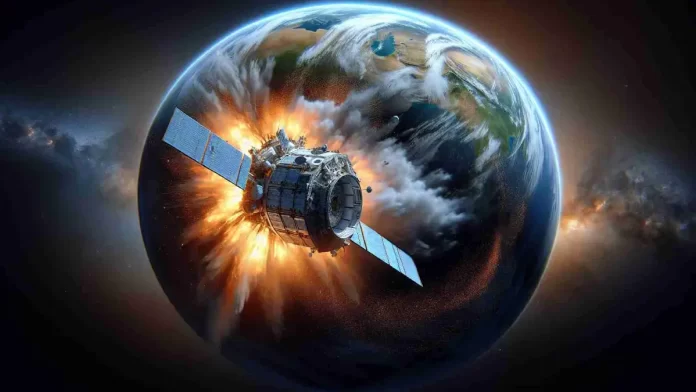An anticipated event is on the horizon as a European Space Agency (ESA) satellite is poised to reenter Earth’s atmosphere, with experts closely monitoring its trajectory. The ESA’s Space Debris Office, in coordination with an international surveillance network, is tracking the Earth-observing ERS-2 satellite, expected to commence its reentry on Wednesday morning, around 6:14 a.m. ET, within a 15-hour window of uncertainty. Live updates on the satellite’s status are available on the ESA’s website.
Given the “natural” nature of the spacecraft’s reentry, without the ability to perform maneuvers, the exact location and timing of its descent remain uncertain, as clarified by the agency. Solar activity, particularly nearing the peak of the sun’s 11-year cycle, known as solar maximum, adds complexity to predicting the satellite’s reentry dynamics. The sun’s heightened activity has previously influenced the hastening of reentries, as observed with the ESA’s Aeolus satellite in July 2023.
With an estimated mass of 5,057 pounds (2,294 kilograms) post-fuel depletion, the ERS-2 satellite is comparable in size to other space debris regularly reentering Earth’s atmosphere. As it approaches approximately 50 miles (80 kilometers) above the Earth’s surface, the satellite is expected to disintegrate, with the majority of fragments burning up upon atmospheric entry. Any remnants that survive are projected to descend harmlessly into the ocean, devoid of hazardous materials.
The ERS-2 satellite, launched on April 21, 1995, was a pioneering venture in Earth observation, contributing invaluable data on polar caps, oceans, and terrestrial surfaces. Collaborating with its predecessor, ERS-1, the satellite facilitated disaster monitoring and scientific research until its operational conclusion in 2011. Following a series of deorbiting maneuvers executed over several months, ERS-2 was directed on a trajectory to naturally descend and reenter the Earth’s atmosphere within 15 years, a deliberate measure to mitigate space debris accumulation.
Despite the spectacle of satellite reentries, the associated risks to individuals are exceedingly low, with the likelihood of injury from space debris estimated at less than 1 in 100 billion annually, significantly lower than other common risks. This event underscores the ongoing efforts of space agencies to responsibly manage satellite life cycles and ensure the safety of Earth’s environment and inhabitants.
Intake of this News
- Reentry Timing: The ESA’s Earth-observing ERS-2 satellite is expected to reenter Earth’s atmosphere on Wednesday morning, with an approximate time of 6:14 a.m. ET, within a 15-hour window of uncertainty.
- Monitoring and Tracking: The ESA’s Space Debris Office, along with an international surveillance network, is closely monitoring the satellite’s trajectory and providing live updates on the ESA’s website.
- Reasons for Reentry: The satellite’s reentry is natural and due to the depletion of fuel, rather than political or operational reasons.
- Uncertainty Due to Solar Activity: Solar activity, particularly nearing the sun’s 11-year cycle peak, known as solar maximum, contributes to uncertainty in predicting the satellite’s exact reentry time and location.
- Satellite Characteristics: The ERS-2 satellite has an estimated mass of 5,057 pounds (2,294 kilograms) post-fuel depletion, similar in size to other space debris reentering Earth’s atmosphere regularly.
- Projected Outcome: As the satellite descends into Earth’s atmosphere, it is expected to disintegrate, with most fragments burning up upon entry. Any remnants are likely to fall harmlessly into the ocean.
- Satellite Background: The ERS-2 satellite, launched in 1995, played a crucial role in Earth observation, collecting data on polar caps, oceans, and land surfaces. It was deliberately deorbited in 2011 to prevent space debris accumulation.
- Safety Considerations: Despite the spectacle of satellite reentries, the risk to individuals from space debris is extremely low, with the likelihood of injury estimated at less than 1 in 100 billion annually.
Overall, the event highlights the ongoing efforts of space agencies to responsibly manage satellite life cycles and ensure the safety of Earth’s environment and inhabitants.



